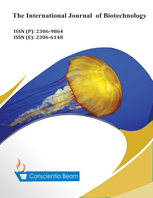The Prevalence of Alcaligenes Faecalis in Bacteremia, Meningitis and Wound Sepsis in a Tertiary Health Care Institution in Western Part of Nigeria
Abstract
The objective of this study is to determine the rate of recovery of Alcaligenes faecalis from clinical specimens of blood, cerebrospinal fluid and wound swabs and the antibiogram in a tertiary healthcare institution. The design was prospective and cross-sectional. The subjects for the study were patients seen at the various facilities in the hospital. There were two thousand and eight hundred patients made up of 1025 (36.6%) adult males; 1475 (52.7%) adult females while 300(10.7%) were children. Specimens of wound, blood culture and cerebrospinal fluid were collected from the various facilities in the hospital for microscopy, culture and sensitivity. Isolates were identified by morphological characteristics and biochemical tests using the protocol of Cowan and Steel. Isolates were tested for antibiotic susceptibility by the disc diffusion method of Kirby-Bauer. 1577 wound samples yielded 165(5.99%) Alcaligenes organisms.933 blood samples yielded 6(0.21%) Alcaligenes organism while 290 cerebrospinal fluid samples yielded 4(0.14%) Alcaligenes faecalis and they had varied susceptibility to the various antimicrobials. Despite the very low percentage of Alkaligenes faecalis in the study its ability to produce extended spectrum beta-lactamase enzymes makes it a potential pathogen. Measures were advanced for the control of the organism.

